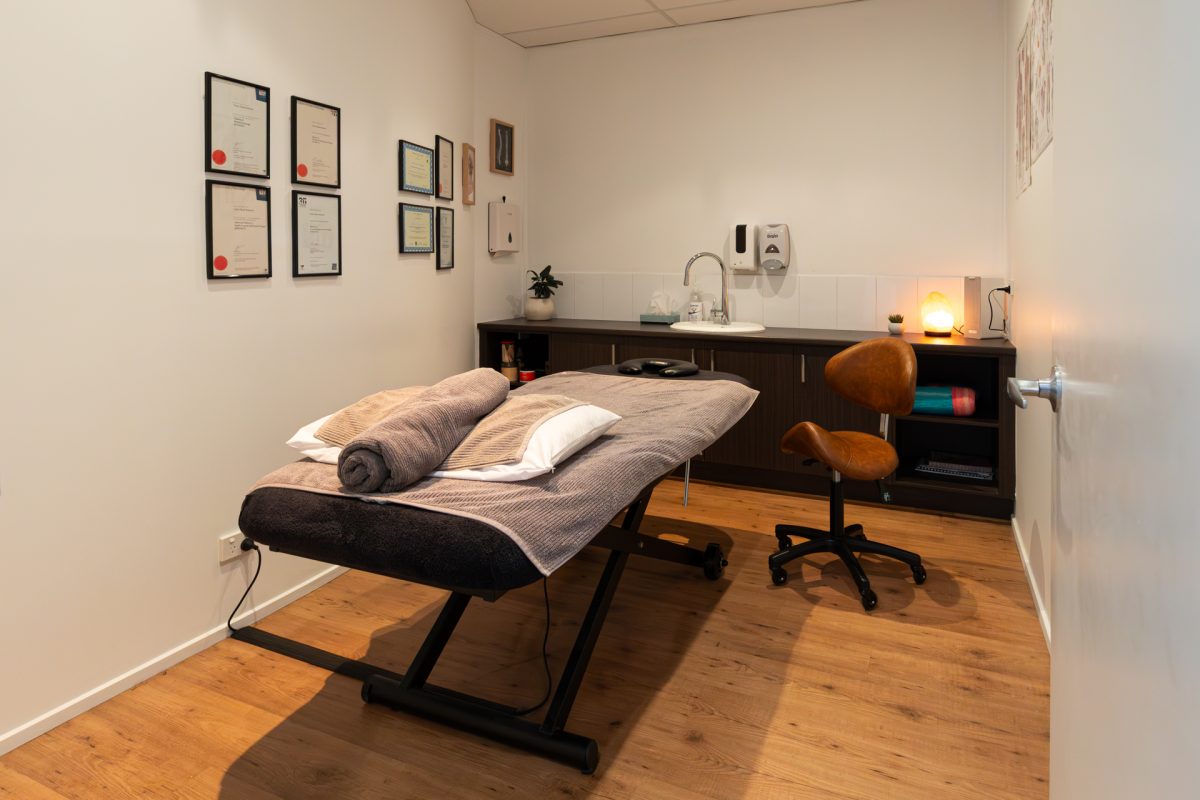
Back, neck, shoulders are the common complaints of Assuage clients, but what about the hidden aches and pains causing havoc on your body? Photo: Michelle Kroll.
After years of working out people’s aches and pains, Assuage Canberra’s Angus Collins has learned a thing or two about tension – including all the places we carry it unwittingly.
While your back and shoulders might be your most obvious complaint, the massage practitioner says there’s one group of muscles that takes many clients by surprise.
“The most common – and particularly in the Canberra population I find – would have to be what I describe as the respiratory muscle group, or ‘breathing muscles’,” he says.
“Your primary breathing muscle is your diaphragm, the muscle that sits under the lungs in the chest cavity. Through a combination of factors – one obviously being stress – so many of us spend our day seated in front of a computer or relatively sedentary, in a position that inhibits the diaphragm from performing to the best of its ability.
“This can lead to tension not only in the diaphragm itself, but also in the ‘accessory respiratory muscles’ – the ones leading up more into the shoulders, and up and around your neck.
“I can’t tell you how many times I have massaged those muscles and the tension has taken people by surprise.”
This affliction can impact any muscle that assists with the breathing process, many of which reside in the upper chest – especially for what Angus calls “upper chest breathers”.
We can’t be blamed, however – we’re wired that way.
“When experiencing high stress, it’s the body’s natural response to sink into a sympathetic nervous system state commonly known as ‘fight or flight’ mode. It harks back to more primal times when taking short, sharp breaths, faster and faster, served a purpose – it would help us escape the tiger.
“It does serve a purpose, but many of us become conditioned to be ‘upper chest breathers’. We tend to sit in that high-stress state for long periods, and that leads to more chronic stress presentations.”

Indulgent doesn’t even begin to cover the treatment at Assuage in Canberra’s Inner South. Photo: Michelle Kroll.
Throughout different stages of life and for different reasons, acute and chronic stress presentations can appear in a number of unexpected places on the human body.
“That could be applied broadly to just about anything – if you’re undertaking a completely new activity, new job, maybe you’ve shifted from being at a desk to something more mobile, and now you’re experiencing fatigue and muscle soreness. It takes time for the body to adapt.”
Angus says it’s best explained as a coping mechanism as the body slowly adapts to the new activity or stressor, or an “over-enthusiastic” response from the body to create tension as it’s building an adaptation.
That’s where remedial massage comes in.
“We use massage to reduce the amount of acute tension build-up as that adaptation occurs. It will make a big difference to the level of discomfort experienced in that period,” he says.
Assuage Canberra practitioners employ a range of remedial therapies from dry needling to cupping and lymphatic drainage, and different massage techniques from myofascial release to trigger point therapy.
“Myofascial release puts tension on more superficial tissue layers, creating a slow, consistent drag to loosen up the connective tissue that runs all over our body,” he says.
“It’s different to say, trigger point therapy, which uses more perpendicular pressure applied at particular points in muscles to release tension, increase blood flow and flush out toxin build-ups.
“They’re all simply techniques that can be incorporated into a broader treatment strategy, depending on a client’s goals and preferences, how their bodies respond and any number of other factors.”
The most effective way to treat your aches and pains – including those lurking undetected and quietly causing havoc – is through consultation with your practitioner ahead of treatment.
Angus says it’s worth talking not just about the places where you detect pain, but your general lifestyle and any recent changes to it.
“Your practitioner is trained to understand the body’s anatomical response to things, and good communication may lead to a treatment you never knew you needed.”
For more information visit Assuage Canberra.












